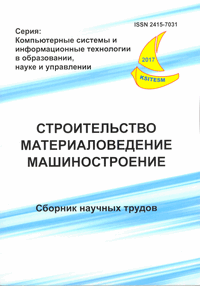Algorithms of artificial intuition for implementation of strong ai
Keywords:
strong AI, artificial intuition, cognitive approach, intuitive and creative thinking, natural logic, limiting-generalizations paradigmAbstract
Purpose. Intuition and Logic are two strategies for prediction and problem solving. Most humans have not been taught logical thinking, but most humans are still intelligent. Contrary to the majority view, it is implausible that the brain should be based on Logic. How does Intuition work? I believe intelligence emerges from millions of nested micro-intuitions, and that Artificial Intelligence requires Artificial Intuition. It is necessary to introduce Human-like Intuition Mechanism into Artificial Intelligence. The aim of this work is the development of constructive algorithms for artificial intuition. Methodology. Modeling the work of intuition is proposed on the basis of the Limiting-Generalizations Paradigm (LGP). Findings. The key components of the intuition model are: basic entities of the LGP; a task-inductor space, event space, an "artificial connectom", coherence mechanisms; Thin Slices. Originality. With the help of formal models and constructive algorithms, it is shown that the basis for rapid cognition and intuition is the adaptive unconscious - the thought process that works automatically when we have relatively little information to make a decision. These models form a new approach to the concept of "Strong AI". Practical value. The proposed model is the methodological basis for creating promising IT, as well as intuitive agents, robots.References
Prokopchuk Yu. A. Nabrosok formalnoy teorii tvorchestva [Sketch of the Formal Theory of Creativity]. Monograph. Dnipro: PSACEA Publ., 2017, 452 p. (in Russsian).
Prokopchuk Yu. A. Printsip predelnykh obobshcheniy: metodologiya, zadachi, prilogeniya [Principle of Limiting Generalizations: Methodology, Problems, and Applications]. Monograph. Dnepropetrovsk: Institute of Technical Mechanics of the NAS of Ukraine Publ., 2012, 384 p. (in Russsian)
Gladwell M. Blink: The Power of Thinking Without Thinking. Back Bay Books, 2007, 320 p.
Kahneman D. Thinking, Fast and Slow. Pub Farrar, Straus and Giroux, 2011, 499 p.
Klein G. A naturalistic decision making perspective on studying intuitive decision making . Journal of Applied Research in Memory and Cognition 4, 2015, pp. 164–168.
Maldonato M. and Dell'Orco S. Natural Logic: Exploring Decision and Intuition. – UK: Sussex Academic Press, 2011, 112 p.
Todd P.and Gigerenzer G. Putting naturalistic decision making into the adaptive toolbox . Journal of Behavioral Decision Making. 14 (5), 2001. – pp. 381–383. doi:10.1002/bdm.396.
Downloads
Published
Issue
Section
License
Редакція Видання категорично засуджує прояви плагіату в статтях та вживає всіх можливих заходів для його недопущення. Плагіат розглядається як форма порушення авторських прав і наукової етики.
При виявлені у статті більш ніж 25% запозиченого тексту без відповідних посилань та використання лапок, стаття кваліфікується як така, що містить плагіат. У цьому випадку стаття більше не розглядається редакцією, а автор отримує перше попередження.
Автори, в статтях яких повторно виявлено плагіат, не зможуть публікуватися в усіх журналах Видавництва ДВНЗ «Придніпровська державна академія будівництва та архітектури».
Автори, які публікуються у цьому журналі, погоджуються з наступними умовами:
- Автори залишають за собою право на авторство своєї роботи та передають журналу право першої публікації цієї роботи на умовах ліцензії Creative Commons Attribution License, котра дозволяє іншим особам вільно розповсюджувати опубліковану роботу з обов'язковим посиланням на авторів оригінальної роботи та першу публікацію роботи у цьому журналі.
- Автори мають право укладати самостійні додаткові угоди щодо неексклюзивного розповсюдження роботи у тому вигляді, в якому вона була опублікована цим журналом (наприклад, розміщувати роботу в електронному сховищі установи або публікувати у складі монографії), за умови збереження посилання на першу публікацію роботи у цьому журналі.
- Політика журналу дозволяє і заохочує розміщення авторами в мережі Інтернет (наприклад, у сховищах установ або на особистих веб-сайтах) рукопису роботи, як до подання цього рукопису до редакції, так і під час його редакційного опрацювання, оскільки це сприяє виникненню продуктивної наукової дискусії та позитивно позначається на оперативності та динаміці цитування опублікованої роботи (див. The Effect of Open Access).

